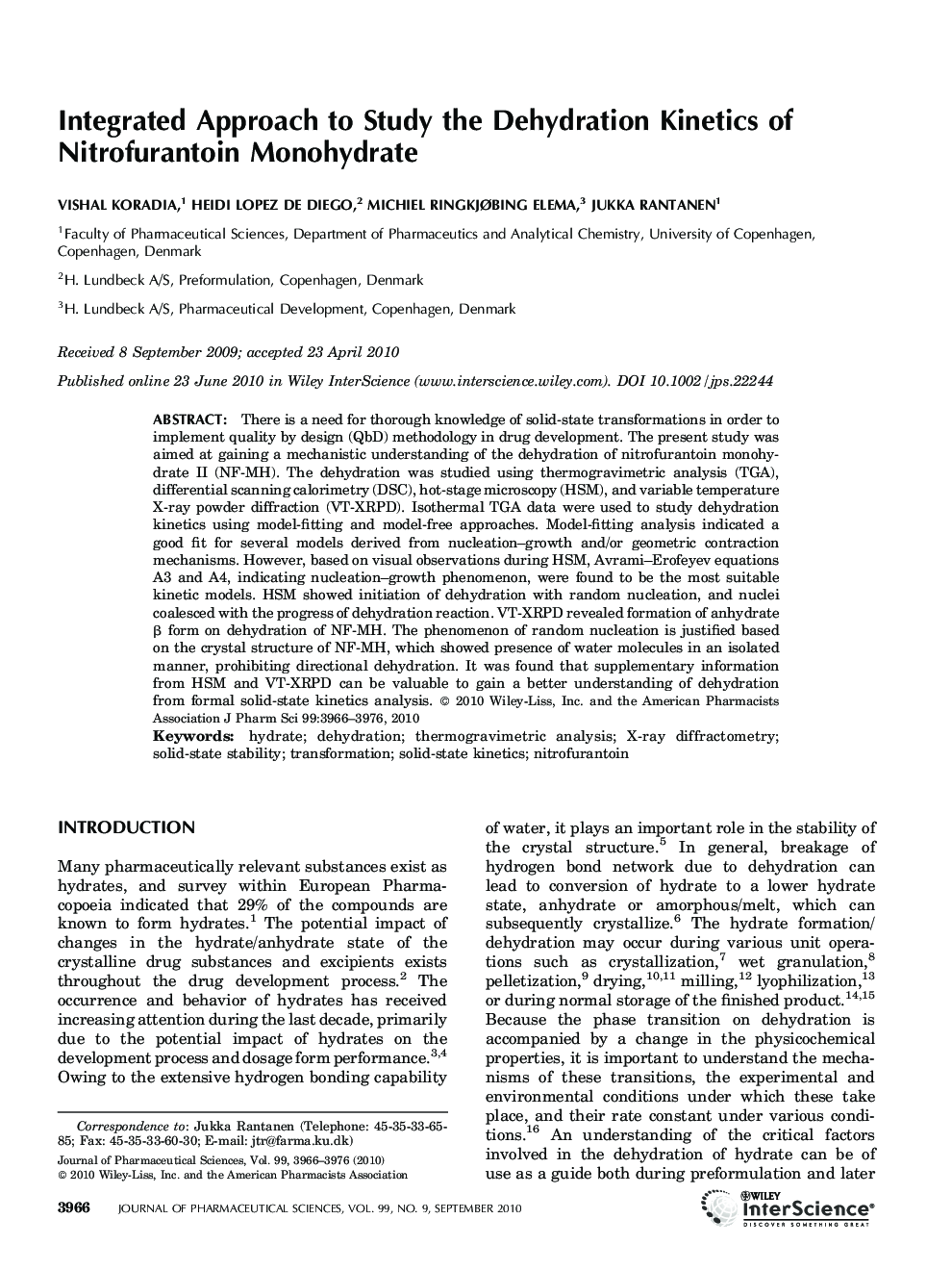| Article ID | Journal | Published Year | Pages | File Type |
|---|---|---|---|---|
| 2486758 | Journal of Pharmaceutical Sciences | 2010 | 11 Pages |
ABSTRACTThere is a need for thorough knowledge of solid-state transformations in order to implement quality by design (QbD) methodology in drug development. The present study was aimed at gaining a mechanistic understanding of the dehydration of nitrofurantoin monohydrate II (NF-MH). The dehydration was studied using thermogravimetric analysis (TGA), differential scanning calorimetry (DSC), hot-stage microscopy (HSM), and variable temperature X-ray powder diffraction (VT-XRPD). Isothermal TGA data were used to study dehydration kinetics using model-fitting and model-free approaches. Model-fitting analysis indicated a good fit for several models derived from nucleation-growth and/or geometric contraction mechanisms. However, based on visual observations during HSM, Avrami-Erofeyev equations A3 and A4, indicating nucleation-growth phenomenon, were found to be the most suitable kinetic models. HSM showed initiation of dehydration with random nucleation, and nuclei coalesced with the progress of dehydration reaction. VT-XRPD revealed formation of anhydrate β form on dehydration of NF-MH. The phenomenon of random nucleation is justified based on the crystal structure of NF-MH, which showed presence of water molecules in an isolated manner, prohibiting directional dehydration. It was found that supplementary information from HSM and VT-XRPD can be valuable to gain a better understanding of dehydration from formal solid-state kinetics analysis. © 2010 Wiley-Liss, Inc. and the American Pharmacists Association J Pharm Sci 99:3966–3976, 2010
